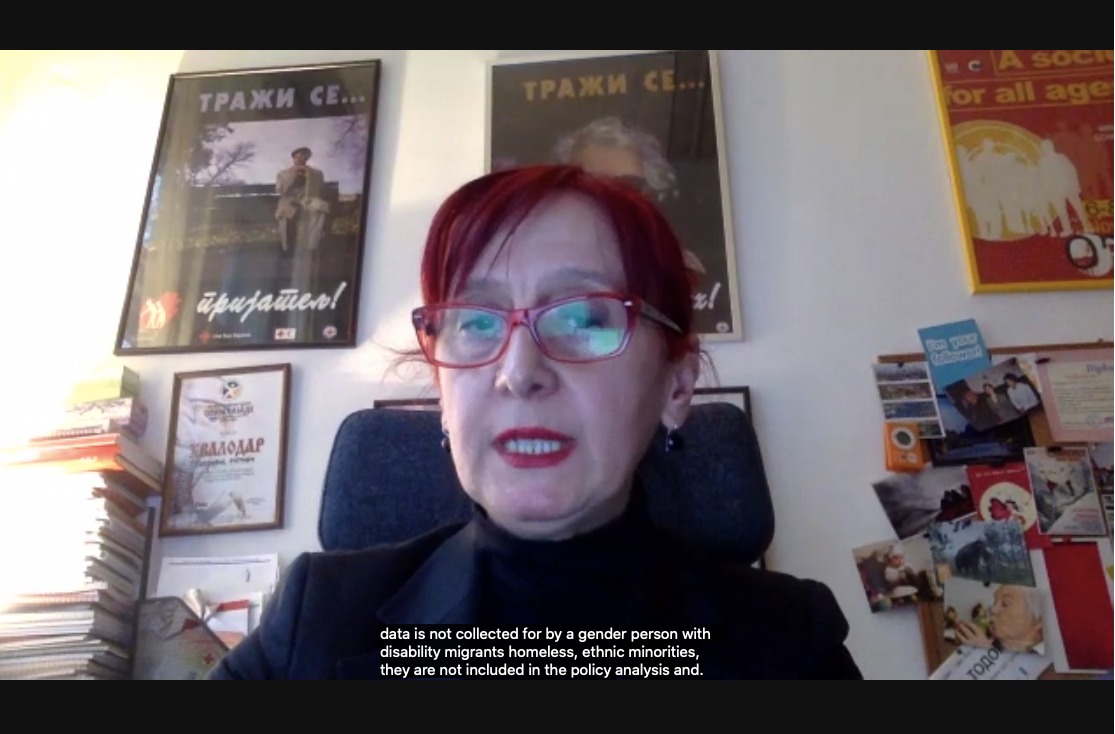Sustainable Development Goals – Regional UNECE Forum

Psychologist Natasa Todorovic
Round table 4.1 SDGs and COVID-19–How can data and statistics help building back better?
The Regional Forum on Sustainable Development Goals was held online from 10 to 18 March 2021 and contained 12 virtual roundtables held from 10 to 16 March 2021, followed by plenary sessions of the forum on 17 and 18. March 2021. The Regional Forum for 2021 also provided space for a series of discussions in 20+ side events.
Expert associate of the Red Cross of Serbia, psychologist Natasa Todorovic, is a member of the Governing-body-UNECE-RCEM (https://unece-rcem.eu/rcem-concept-note/) and represents organizations that work with older persons, and was selected by NGOs to make a statement in the round table 4.1 on the topic related to data and statistics, and how this area can help us in building back better. On this occasion, Natasa Todorovic stated that:
„We have the means and opportunity to base decision making on evidence and put in place public policy based on knowledge and verifiable information. Our success or failure to achieve the sustainable development goals rests on us being able to ’ treasure what we measure’.
However, the data revolution is still unfolding and it is not developing evenly and fairly. even with the adoption of Agenda 2030 and commitments from member states, international financial institutions, and the private sector. It is therefore essential that we understand who and what we are missing and how we can move ahead to build a world where no one is being left behind. Data can tell us a powerful story about priority setting. For example UN Women data today highlighted the hardest hit sectors by Corona to be health and social care, education and domestic services, predominantly occupied by female workers – all the things we need and rely on. But the EU Recovery plan focuses on male dominated sectors – construction, energy, agriculture, transport and Information and Communication. How did this happen? Where is the social investment?
One of the main issues is how assumption and prejudice is behind the idea that a one size fits all approach is fine. In my field of ageing it is very clear and it is not acceptable that the data for older persons is bundled in an oversized category where everybody over the age of 65 is treated the same, without gender and disability analysis, and that there be statistical age cut offs – 74 for example – when we know in this region people live to very old ages..
The COVID-19 crisis showed so clearly how important is to be able to document and to share and cross-examine multiple data about people affected, with data about healthcare, social welfare, social protection coverage, housing, types of work and access to child support and pensions.
In future emergencies we will also need to use the information on levels and impact of climate change, localised weather changes, air pollution, localised food or drug emergencies etc. While statistics gathered through public services and census is important so too is making sure we diversify data sources.”
As a conclusion of her presentation, Natasa Todorovic pointed out that we need better use of existing data and smarter ways of collecting, classifying, analysing and exchanging, but also that we must always be careful not to fall into the digital trap and believe that we know everything we need to know now that computers and algorithms work for us.
Complete written statement at the link: https://unece-rcem.eu/4-1-sdgs-and-covid-19-how-can-data-and-statistics-help-building-back-better/
Forum statement: https://www.youtube.com/watch?v=bl_qpm9zs-E&t=65s
